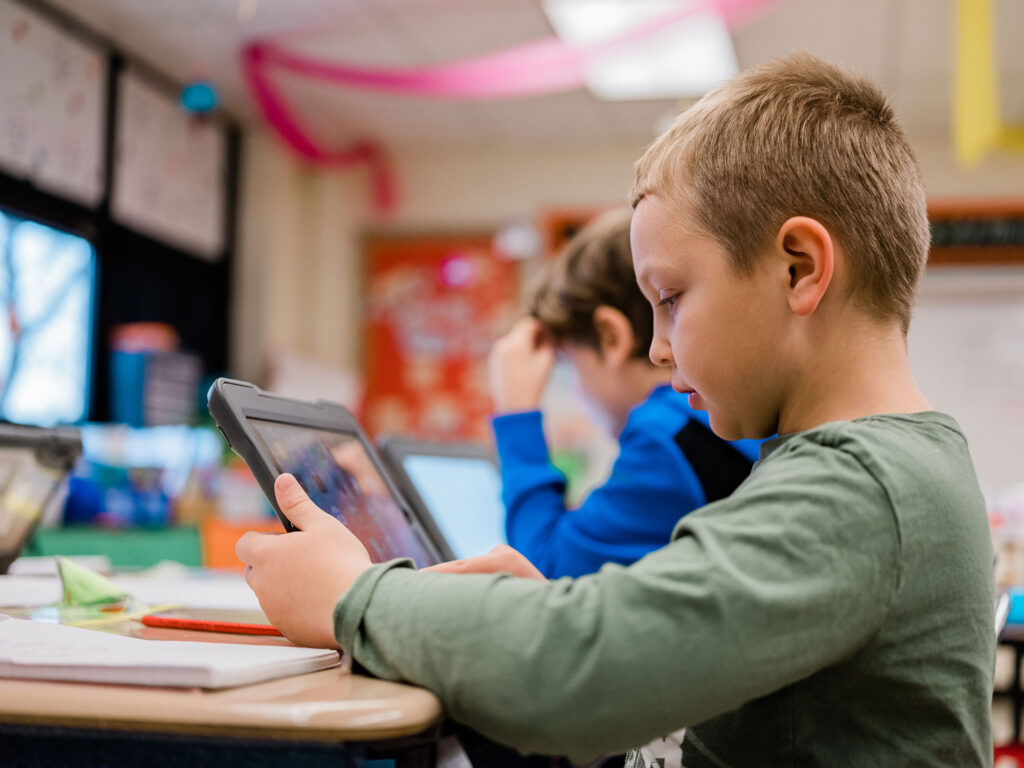In a recent New York Times piece, a high school student in Donna, Texas, named Perla describes how she rides the school bus an extra three hours a day because she needs the bus’s wi-fi connection to do homework. Another set of siblings, Isabella and Tony, stand outside their school at 7 pm just to access its wi-fi hot spot and download their math homework on their phone.
The story comes on the heels of a new Rutgers University report that found that while 9 in 10 lower-income families can access the internet in some way, a quarter can only connect by smartphone, and half of those with a connection say it is too slow for reliable use.
In short, American internet service is falling behind. Americans pay too much, and average connections are sluggish when compared with speeds in many European of Asian countries. Huge swaths of rural America are locked out of any broadband access, and low-income kids without a reliable connection at home are struggling to benefit from a full education. Competition among providers is slim. Six in 10 Americans have either one choice or no choice in broadband providers.
Does it have to be this way? The short answer is no. But thinking about the internet as something everyone should have—like a public utility—is a shift in how we have historically treated internet access, as well as how we think about what kids really need to access equal education.
Going back almost 100 years, the country thought of access to communications tools very differently. In 1934, Franklin Roosevelt signed the Telecommunications Act, which broke up monopolies and regulated companies that provided telephone lines, which the government saw as critical to the nation’s growth and prosperity
When the internet era arose, providers faced very little regulation, even as the web began to occupy the same importance in American life as phones once did. Last year, the FCC adopted “net neutrality” regulations that allowed it to regulate broadband a little more like a utility. For example, the new rules stop providers from purposely slowing down speeds or charging companies like Netflix to use internet “fast lanes” for their content. In a vote next month, the FCC will decide whether to reform its Lifeline program, which would expand a phone subsidy program to include broadband access for low-income Americans.
Still, the new net neutrality regulations don’t mirror the rules for telephone lines, which are still considered a public utility. The FCC won’t regulate broadband rates or enforce quality or availability standards. While cities like Chattanooga, Tenn., have created high-speed, municipal-owned fiber networks (Comcast tried to sue), many Americans are left with only one option, and it is often financially out of reach.
“We treated the telephone industry like a utility and people don’t seem to be surprised by that,” Susan Crawford, author of “Captive Audience: The Telecom Industry and Monopoly in the New Gilded Age,” told TIME magazine. “High-speed internet access plays the same role in American life. It’s just that these guys have succeeded in making us think that it’s a luxury.”
The “these guys” Crawford is referring to are Comcast, AT&T, and Verizon, which doled out $44 million to lobby Congress in 2015 alone. But ask any student standing on the street at night just trying to download his or her math homework: the internet isn’t a luxury; it’s a necessary part of day-to-day life in 2016.
In today’s schools, the internet is critical for researching and in some cases completing homework. But the Rutgers University report found kids without internet access at home were also less likely to look up topics they are interested in—a world on knowledge they could tap into every evening. The report also found that 42 percent of lower-income families without home access said cost is the biggest barrier. And internet prices are up more than 21 percent since two years ago, reaching and average of $47 per month—the price of a tank of gas, an electric bill, or a unexpected parking ticket. For many Americans, an added monthly expense of around $40 is too much on a tight budget.
One of the most telling examples of how lack of home internet access exacerbates inequality comes from a district superintendent in Texas, who told the New York Times teachers try to accommodate students without access, but at the same time the district can’t “hold back on our use of technology in the classrooms” because it has to prepare children for the world awaiting them.
The United States shouldn’t be faced with this choice—hold back basic technology in classrooms, or leave kids without access behind. But without rethinking our philosophy on internet access, that choice holds us all back from realizing the full potential of the internet, and the full potential of today’s children.
